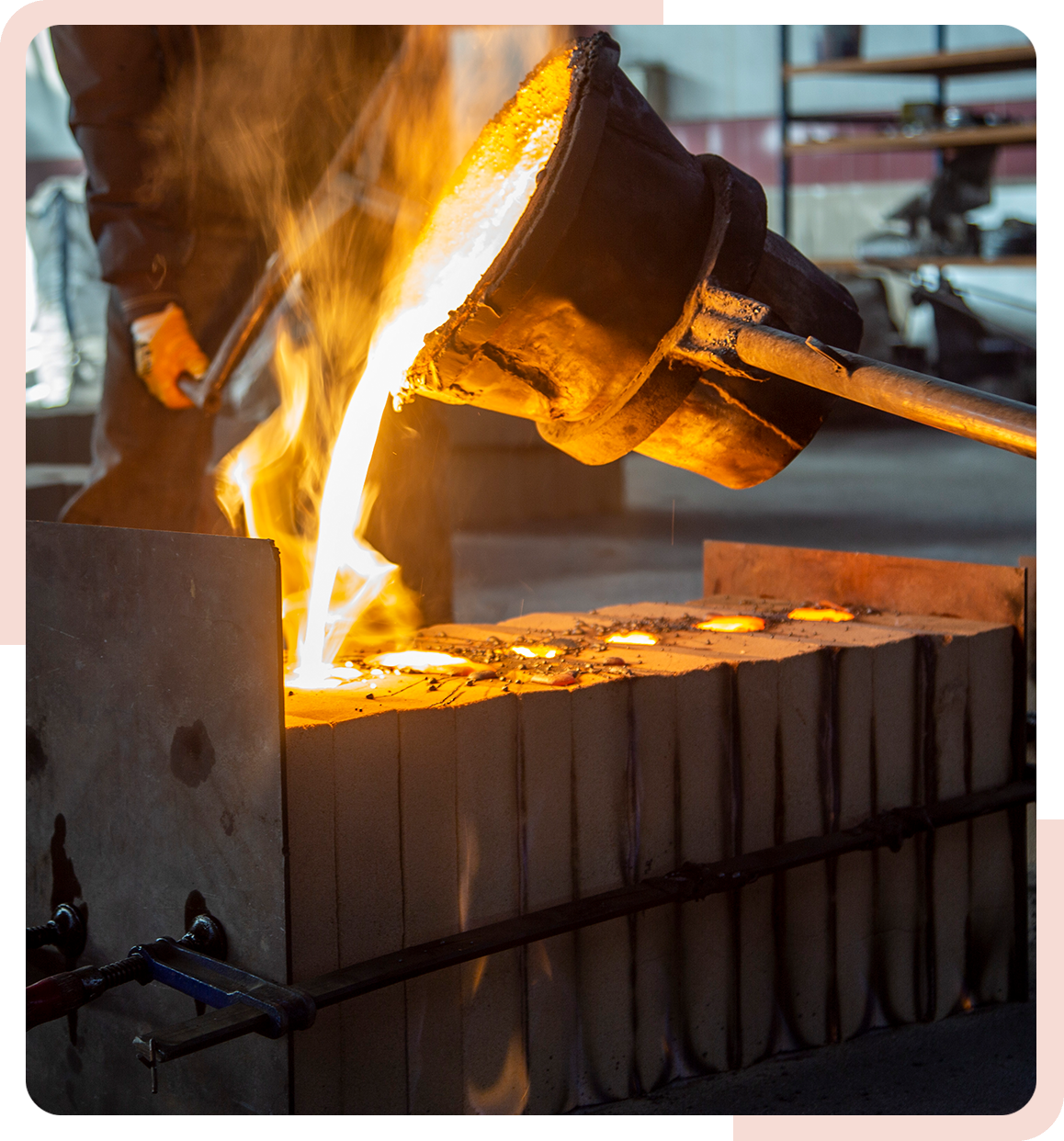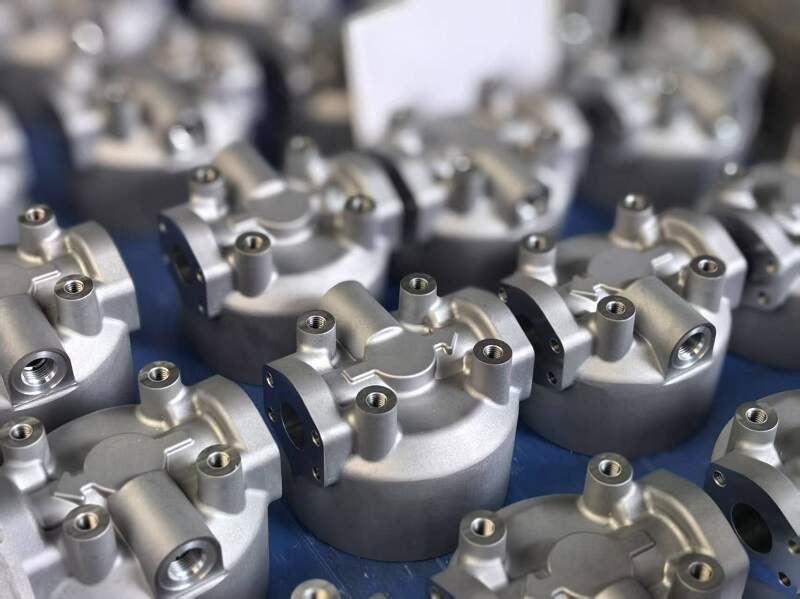Why Precision aluminum casting Powers Sustainable and Eco-Friendly Manufacturing
Wiki Article
Understanding Aluminum Casting: A Comprehensive Guide to Its Advantages and Applications
Aluminum casting is a procedure that transforms liquified aluminum right into strong kinds with various strategies. This method provides notable benefits, such as light-weight strength and corrosion resistance. It discovers applications in countless sectors, reflecting its versatility. Nevertheless, understanding the intricacies of aluminum casting and its best methods can considerably influence the quality of the end product. Exploring these components reveals the true possibility of aluminum casting in modern manufacturing.The Essentials of Aluminum Casting
Aluminum casting is a manufacturing process that changes liquified aluminum into solid things via various methods. This procedure starts with home heating aluminum until it reaches its melting point, enabling it to move right into molds. There are several techniques of aluminum casting, consisting of sand casting, pass away casting, and financial investment casting, each ideal for different applications based on layout intricacy and manufacturing volume.In sand casting, molds are created making use of sand, providing versatility for intricate forms. Die casting involves forcing liquified aluminum right into a steel mold under high pressure, resulting in specific and repeatable parts. Investment casting, on the various other hand, makes use of a wax pattern that is covered with ceramic to develop thorough elements.
After the aluminum cools down and strengthens, the molds are gotten rid of, revealing the finished products. This casting procedure is important in various sectors, consisting of vehicle, aerospace, and durable goods, making it possible for the development of lightweight and long lasting components.
Advantages of Aluminum Casting
Among the crucial advantages of aluminum casting depends on its capacity to produce lightweight yet solid elements. This distinct mix makes aluminum an excellent choice for various sectors, consisting of automobile, aerospace, and customer products. The intrinsic rust resistance of aluminum also boosts the sturdiness of the cast elements, lengthening their lifespan and decreasing the requirement for upkeep.
In addition, aluminum casting enables complex geometries and complex styles, which can result in a lot more effective and visually pleasing items. The material's superb thermal and electric conductivity even more increases its applications, specifically in electronic devices and warmth exchangers.
Aluminum recycling is highly reliable, contributing to ecological sustainability and lowering manufacturing prices. On the whole, the benefits of aluminum casting position it as a useful and versatile solution for makers seeking to optimize efficiency while decreasing weight and resource use.
Usual Approaches of Aluminum Casting
While various techniques exist for aluminum casting, each technique supplies distinct advantages tailored to certain applications. One of the most usual methods consist of sand casting, die casting, and investment casting.Sand casting, understood for its adaptability, makes use of sand molds to create complicated forms and appropriates for both small and large production runs. Die casting, on the other hand, employs high-pressure shot of liquified aluminum right into steel molds, causing exact measurements and smooth surface areas, making it excellent for automation.
Investment casting, frequently described as lost-wax casting, involves producing a wax pattern coated with a ceramic covering. Precision aluminum casting. When the wax is thawed away, molten aluminum is poured right into the cavity, yielding intricate layouts and exceptional surface coatings
Each of these methods plays an important duty in the aluminum casting landscape, providing particular benefits that satisfy varying manufacturing requirements and production scales.
Applications Throughout Industries
The versatility of aluminum casting approaches permits a large range of applications across numerous markets. In the automobile field, light-weight aluminum elements enhance gas effectiveness and performance, adding to the growing demand for electric vehicles. Aerospace sectors make use of aluminum spreadings for their strength-to-weight ratio, ensuring safety and toughness in airplane manufacturing.The building and construction market benefits from aluminum casting with architectural components and structural parts that withstand deterioration and need marginal upkeep. Additionally, consumer electronic devices producers use aluminum spreadings for real estates and structures, balancing appearances with functionality.
In the marine field, aluminum castings are favored for boats and aquatic devices as a find more result of their resistance to saltwater rust. Furthermore, the medical field makes use of aluminum castings in surgical instruments and devices, making certain precision and dependability. Overall, aluminum casting's flexibility allows it to meet the diverse needs of several industries, making it a crucial production process.
Finest Practices for Successful Aluminum Casting
Effective aluminum casting depends on a combination of cautious prep work, specific implementation, and comprehensive top quality control. Selecting high-grade aluminum alloys is vital, as they directly affect the casting's homes and efficiency. Correct mold design is essential, assuring that it accommodates thermal tightening and minimizes problems.During the melting procedure, maintaining the correct temperature level and try this staying clear of contamination are important to accomplishing an uniform alloy. In addition, utilizing reliable putting methods can improve the dental filling of molds, lowering the possibility of air pockets or incorporations.
Post-casting, implementing detailed assessment approaches, such as visual evaluations and non-destructive testing, ensures that issues are recognized early. Moreover, utilizing extensive high quality control procedures throughout the procedure assists preserve uniformity and dependability in the last items. By adhering to these finest techniques, suppliers can significantly improve the success and effectiveness of their aluminum casting procedures.
Regularly Asked Concerns
What Safety and security Procedures Should Be Taken During Aluminum Casting?

Just How Can Defects in Aluminum Castings Be Lessened?
Defects in aluminum castings can be minimized via cautious mold style, appropriate temperature control, ensuring tidy steel, making use of suitable pouring methods, and conducting detailed assessments to recognize and attend to problems prior to completing the casting procedure.
What Is the Ecological Impact of Aluminum Casting?
The ecological influence of aluminum casting consists of energy-intensive procedures, greenhouse gas emissions, and source removal concerns. Improvements in recycling and lasting methods can mitigate these results, promoting an extra environment-friendly approach to aluminum manufacturing.Can Aluminum Casting Be Recycled?
Yes, aluminum casting can be reused successfully. The reusing process calls for considerably much less energy compared to primary aluminum production, making it an ecologically pleasant option that adds to resource conservation and decreased carbon discharges.What Are the Expenses Connected With Aluminum Casting Processes?
Costs associated with aluminum casting processes include product expenditures, labor, tools maintenance, energy usage, and mold and mildew construction. These variables can differ significantly based upon production range, intricacy of designs, and particular production strategies employed.Aluminum casting is a process that changes liquified aluminum into solid forms via different techniques. Aluminum casting is a manufacturing procedure that changes liquified aluminum right into solid items via different techniques. While numerous strategies exist for aluminum casting, each method supplies unique advantages customized to specific applications. The environmental effect of aluminum visit casting includes energy-intensive processes, greenhouse gas emissions, and resource removal worries. Costs associated with aluminum casting procedures consist of material expenditures, labor, tools maintenance, power intake, and mold construction.
Report this wiki page